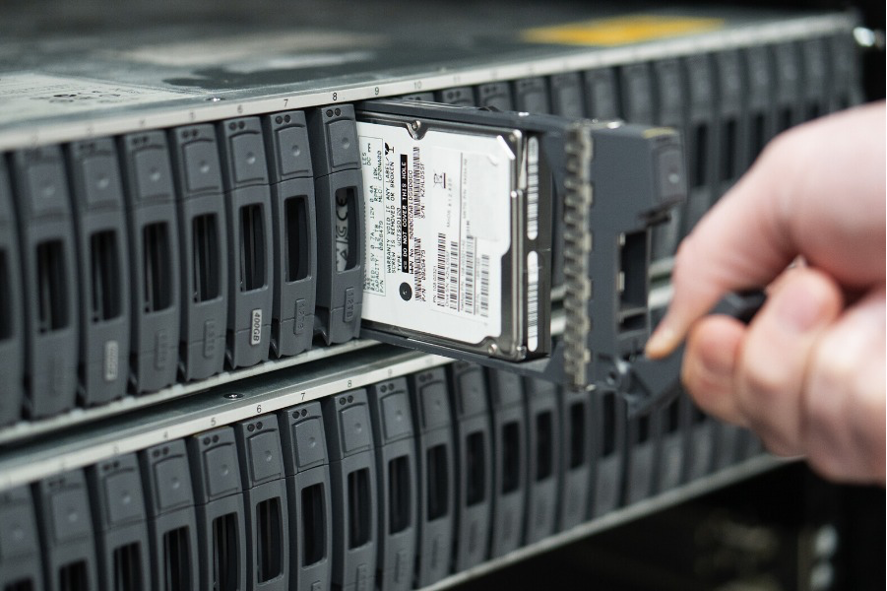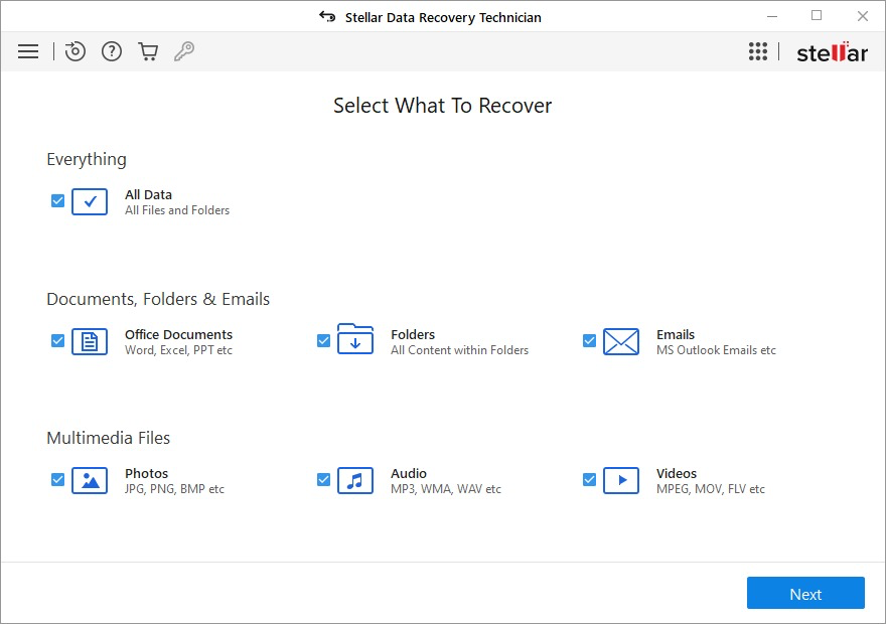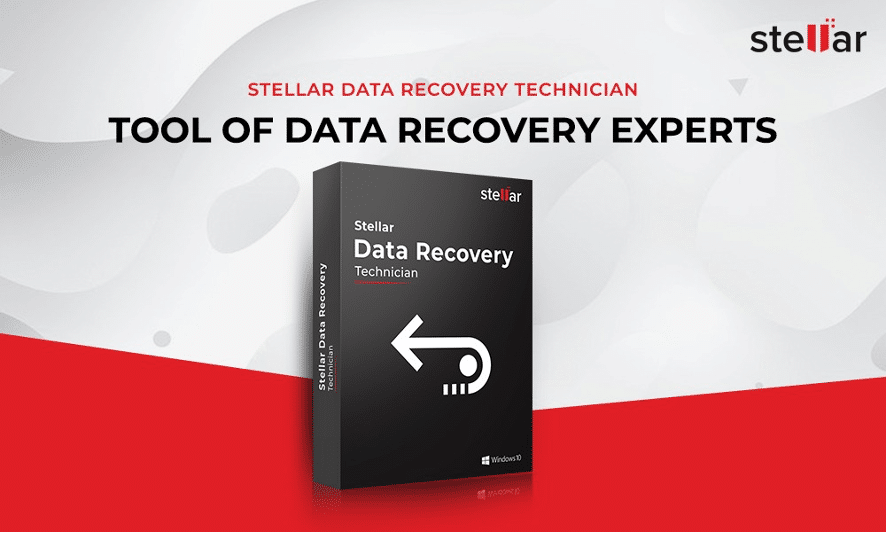When a file is deleted, it isn’t actually erased from the disc. Instead, the space the file occupied is marked as available, allowing the operating system to overwrite it when it needs additional space. If you can identify the accidental deletion before the file is overwritten, recovery becomes quite simple.
Recovery Before Overwriting
If the file has not yet been overwritten, Stellar Data Recovery simply restores the file path and reallocates its place on the hard disc. However, if the data has been overwritten, recovery becomes a little more complicated and depends on how many times the space has been reused.
Advanced Recovery Methods
Fortunately, Stellar Data Recovery is prepared to deal with these situations. Using ‘Raw’ and ‘Metadata’ recovery methods, as well as other more complex techniques, the software guarantees that your files will be recovered, no matter what state they are in. As long as you haven’t physically destroyed your hard drive in a moment of panic, recovery is possible.
This capability applies to almost all storage devices and configurations, including SSDs, hard discs, USB memory sticks and even certain RAID configurations, specifically RAID 0, 5 and 6.
What is RAID?

RAID (Redundant Array of Independent Disks) is a technology that allows multiple hard discs to be combined to improve performance and/or provide data redundancy. We’ll focus mainly on the RAID 0 configuration, with a brief mention of RAID 1.
RAID 0: Performance without Fault Tolerance
RAID 0, often referred to as ‘striping’, distributes data evenly between two or more discs without any redundancy or fault tolerance. Although it offers better performance by halving write times, it is extremely vulnerable. The failure of a single disc leads to total data loss across the entire array. This configuration is useful for applications that require high performance and can tolerate lower reliability, such as scientific computing and computer games.
RAID recovery with Stellar Data Recovery
Given RAID 0’s vulnerability to data loss, it’s easy to see why RAID Data Recovery Software for this configuration is so crucial. Stellar Data Recovery Technician is able to handle data recovery on RAID 0 arrays, ensuring that even on these high-performance systems, data can be restored effectively.
Introduction to Stellar Data Recovery Technician
Losing data is one of the most frustrating experiences, but the good news is that often the data isn’t actually deleted. When a file is deleted, the space it occupied is simply marked as available for new data. Stellar Data Recovery Technician takes advantage of this feature to restore files that have been accidentally deleted, corrupted or inaccessible due to hardware failures.
Preparing for Data Recovery
Download and Install the Software
To get started, visit the Stellar Data Recovery website and click on the big green ‘Free Download’ button. Once downloaded, run the programme, select your preferred language and follow the on-screen instructions to install the software. Make sure you read all the terms and conditions before proceeding.
Using Stellar Data Recovery Technician
Selecting File Types

With the software installed, launch it and select the file types you want to recover. To make sure you recover as much data as possible, select “All Data”.
Drive Identification and Selection
If your RAID 0 array is compromised, one of the physical discs will not appear in disc management. In Stellar Data Recovery, select the ‘Can’t Find Drive’ option to allow the software to search for the missing disc.

Extensive Research
If the disc is not found immediately, activate the “Extensive Search” option. This in-depth function can take some time, especially if you’re scanning a large volume of data. In our test, it took around 1 hour and 18 minutes to scan a 500GB hard drive.
Lost Partition Recovery
After the search, the software will list the lost or damaged partitions. Select the partition you want and click on ‘Scan’. This process may take a while, depending on the size and type of the disc.

Data Recovery
Once the scan is complete, Stellar Data Recovery will display the files and folders it has managed to detect. Navigate through the menus to find the files you want to recover. Select them and click on the ‘Recover’ button.
Saving Recovered Files
Choose a file path to save the recovered data. Make sure the destination drive has enough space for the files you are recovering. Click on “Start Saving” to begin the recovery process.

Common Challenges with Storage Devices
Regardless of the type of device, data is always made up of a series of ones and zeros. This data can be stored on various types of devices, each with its own complexity and components, such as storage controllers that ensure the correct retrieval of files by the operating system.
Potential Points of Failure
- USB devices: Can fail due to physical or logical problems.
- Storage Controllers: Essential for communication between the operating system and the data, but also susceptible to failure.
- Hard Discs: Can suffer mechanical or logical failure.
In addition, the simple act of reading and accessing data can introduce risks. One example is “Bit-flip”, where data in RAM is changed from one to zero or vice versa due to cosmic radiation, energy or temperature fluctuations, often resulting in data corruption.
Metadata Analysis
Analysing metadata is an efficient and highly successful method of data recovery. Every file stored on a device contains metadata, which includes essential details about the file, such as its location, structure and how to access it.
Data retrieval by analysing metadata works as follows:
- Metadata analysis: The software examines the metadata to obtain detailed information about the file.
- File reconstruction: Using the structure and details contained in the metadata, the software can reconstruct the file in its original format.
This method is preferred because it is more accurate and is able to recover complete and usable files, as opposed to disorganised and incomplete data.
Raw Data Recovery
Raw data retrieval is considered plan B. Although sophisticated, this technique is broader and less precise than analysing metadata.
In this method:
- Identification of File Signatures: The software tracks patterns and signatures that indicate the beginning and end of a file.
- Data Restoration: Data is compiled and restored, but often in an incomplete and disorganised way due to missing or corrupt metadata.
Despite the disorganisation and possible renaming of files, raw data recovery still ensures that data is recovered, even if it is not in its original form.
Conclusion
Data recovery can seem daunting, but with Stellar Data Recovery Technician, the process is simplified and efficient. This tool is especially useful in complex situations, such as recovering data from a RAID 0 array. If you need a reliable solution for recovering your lost data, Stellar Data Recovery Technician is an excellent choice.
For any data loss situation, trust Stellar Data Recovery Technician to recover what seemed lost forever.


